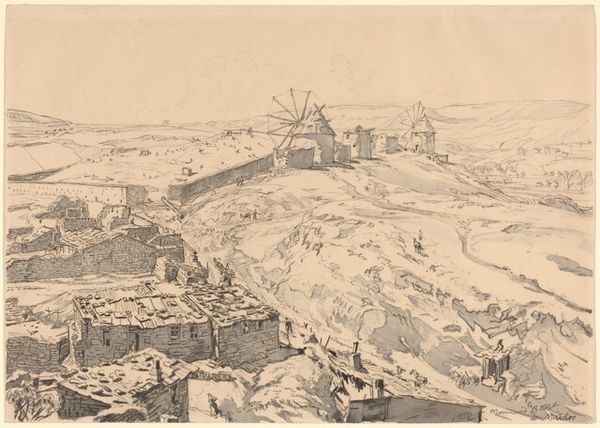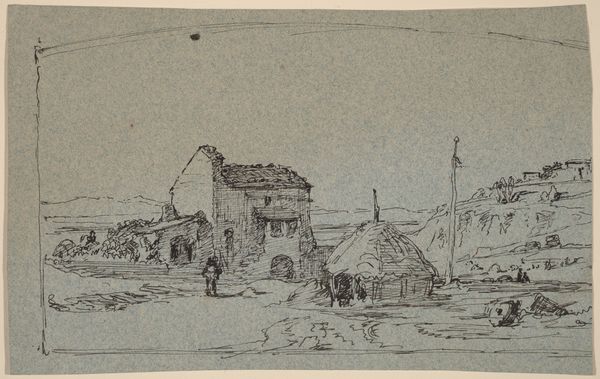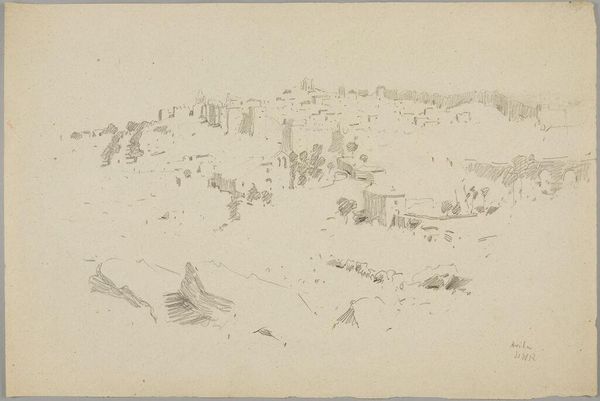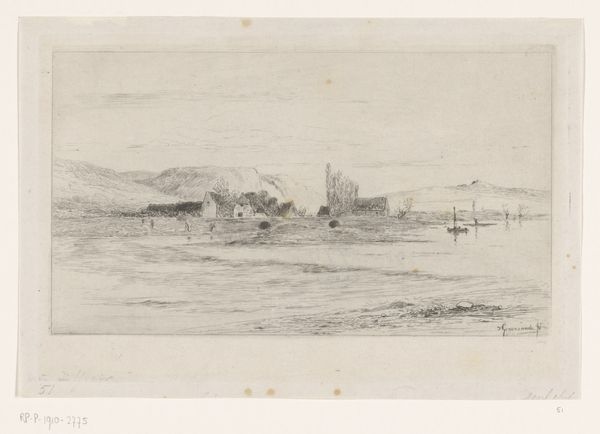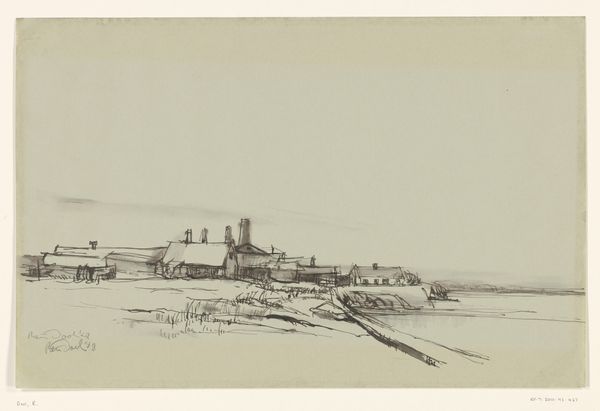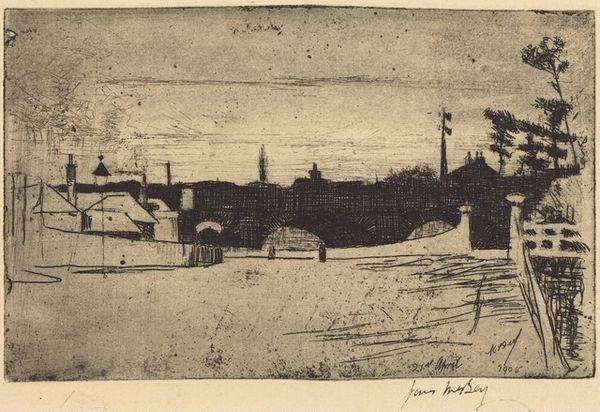
Copyright: Public Domain: Artvee
Curator: The work before us, “Quai Boieldieu in Rouen,” was composed by Camille Pissarro around 1896, a cityscape captured in pen and pencil. Editor: Oh, it feels wonderfully transient! Like a fleeting thought given form. There’s something haunting about its greyscale, as if the color’s been deliberately drained to focus on form and feeling. Curator: Pissarro often returned to urban subjects late in his career, depicting the hustle and bustle of cities from hotel windows. I find it a powerful symbol for a time of great societal change. What symbolic resonances do you see within the image itself? Editor: Water is present and potent. Beyond its literal representation as a harbor, it is a fluid and fluctuating threshold between consciousness and unconsciousness, reflecting the constant flux of urban life. Notice how the sharp, angular architecture in the background meets the swirling pen strokes depicting the sky; an intersection between the enduring human ambition and the ceaseless changes in weather and atmosphere. Curator: It seems like a memoryscape, not really impressionism exactly. I love how he captures the industry's energy with these brief marks. One can almost feel the clamor of stevedores and wagons. Editor: Exactly. I find the monochromatic tones amplify a sense of looking at a fragment of collective memory. And there is almost a melancholy to this muted industrial scene that invites contemplation of how much the industrial heartlands shaped the identities of urban dwellers. Curator: His hand moved quickly, didn't it? There is so much vitality conveyed using limited detail. You look beyond the individual boats or buildings and absorb it. Editor: Precisely. Pissarro delivers us a feeling rather than a mere photograph, a dream in charcoal and graphite that is eternally imprinted upon Rouen's waterfront.
Comments
No comments
Be the first to comment and join the conversation on the ultimate creative platform.

